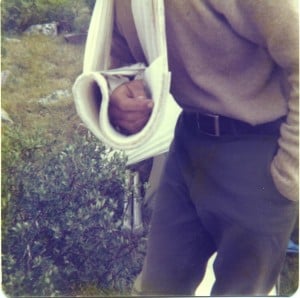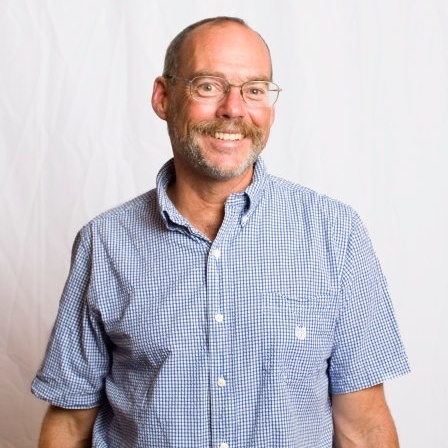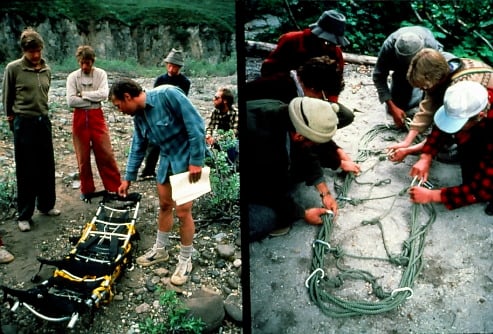What drives me nuts in wilderness medicine education?

1. Classroom medicine
This is advice that makes sense in the classroom but fails in the reality of the field. Years ago, we taught—I taught—not to apply warmth to a severely hypothermic patient. These people were in a "stable metabolic icebox." Then, I knelt next to my first profoundly hypothermic patient in the wilderness and this advice melted. I had no illusions I would warm this patient in the field, but not applying heat to stabilize his temperature made no sense.
I once read advice to keep frozen toes frozen by sleeping with the foot outside of the sleeping bag. This fell to the axe of reality when I stared at my own frozen toes in a tent on a cold winter's night. We used to think tourniquets implied amputation and that open chest wounds needed to be sealed with three-sided dressings to allow air to escape. This classroom advice did not survive the test of the battlefield.
2. Inaccurate statements of frequency
Hearing something once and acting upon it, no matter how thin the supporting evidence is.
 With all the cheese NOLS courses consume, it's good that the data supports strains and sprains, rather than cheese slicing, as the most common cause of injury.
With all the cheese NOLS courses consume, it's good that the data supports strains and sprains, rather than cheese slicing, as the most common cause of injury.
If I acted upon all the dramatic tales I’ve heard from someone who heard from someone who knew a guy, I would not leave home without an auto-injector of epinephrine in a hip holster, locked and loaded. When I read the NOLS incident data history, solid enough to generate multiple medical papers, I can argue that anaphylaxis is rare in the wilderness. But I won't make that argument (and I’m from NOLS). A snapshot is not the entire picture. Data is often a matter of context, and the bottom line is that we don't know the incidence of anaphylaxis in the outdoors. I have epinephrine in my first aid kit. I don’t imagine I will ever use it.
In the same vein, I recently read about the high risk of a lawsuit from reducing a shoulder dislocation in the field. Based on documented cases or data? I think not. I've also heard outdoor experts say that the most common injury on NOLS courses is a laceration from slicing cheese. The real answer, sprains and strains, is easily accessible in the published literature.
When you see or hear numbers, ask for the source, and ask for the conflicting evidence. If the educator is worth his salt, he will be able to tell you the breadth of science on this question. Consider any unreferenced number to be junk.
3. And then there are those who claim expertise in wilderness medicine, but whose wilderness experience is limited to conference rooms and catered trips.
How can you talk the walk when you don’t walk the talk?
Am I innocent? Probably not, but I have the good fortune of working in a community of colleagues who will call me to task if I slip into the traps of classroom medicine, deceptive statistics, un-factual facts, or when I spend too little time out of doors.
Read more posts from Tod Schimelpfenig, our Curriculum Director, on the blog's Wilderness Medicine page.
Written By
Tod Schimelpfenig
As a NOLS Instructor since 1973 and a WEMT, volunteer EMT on ambulance and search and rescue squads since the 70s, Tod Schimelpfenig has extensive experience with wilderness risk management. He has used this valuable experience to conduct safety reviews as well as serve as the NOLS Risk Management Director for eight years, the NOLS Rocky Mountain Director for six years, and three years on the board of directors of the Wilderness Medical Society, where he received the WMS Warren Bowman Award for lifetime contribution to the field of wilderness medicine. Tod is the founder of the Wilderness Risk Manager’s Committee, has spoken at numerous conferences on pre-hospital and wilderness medicine, including the Australian National Conference on Risk Management in Outdoor Recreation, and has taught wilderness medicine around the world. He has written numerous articles on educational program, risk management and wilderness medicine topics, and currently reviews articles for the Journal of Wilderness and Environmental Medicine. Additionally, he is the author of NOLS Wilderness Medicine and co-author of Risk Management for Outdoor Leaders, as well as multiple articles regarding wilderness medicine. Tod is the retired curriculum director for NOLS Wilderness Medicine and is an active wilderness medicine instructor



